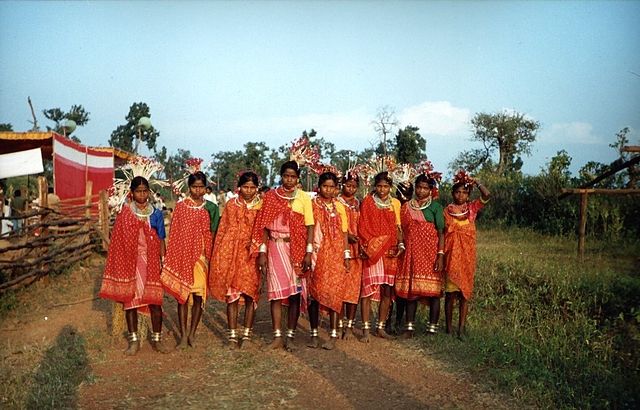News Highlights
The Bharatiya Tribal Party (BTP), a political party based in Gujarat, envisions Bhil Pradesh as a separate state carved out of 39 districts spread over four states: 16 in Gujarat, 10 in Rajasthan, seven in Madhya Pradesh, and six in Maharashtra.
Demand for Bhil Pradesh
- Who are Bhils?
- They are a tribal ethnic group which is present in multiple states in India.
- They belong speak Bhil language (include in Indo – Aryan language)
- Beliefs practiced by Bhils
- They worship local deities like Khandoba , Kanhoba , Bahiroba etc.
- They also worship tiger god like vaghdev.
- They do not have temple their own and they consult Bavas
- Festival – Baneshwar fair
History of Bhil Pradesh
- During the British period the Bhils were governed by an old feudal structure .
- The Bhils mainly in Rajasthan and Gujarat worked as bonded labour.
- During the time of 1899 – 1900 Deccan famine the tribals were worst affected which led to social reform movement called Bhagat Movement which is led by Govind Guru with ideas of
- Questioned policies of British
- Vegetarianism
- Avoiding alcohol
- Rejected bonded labour
- The movement resulted in the Mangarh massacre by the British on the belief that the Bhils were going to revolt for the Bhil state.
- As an effect of the massacre the tribal leader Govind Guru conducted another gathering and demanded for Bhil state in 1913.
- These movements inspired Bhils to ask for a separate state called Bhil Pradesh.
Reason for Bhil Pradesh Demand
- Before independence of India the regions Dungarpur , Banswara , Udaipur region of Rajasthan , Gujarat and Madhya Pradesh respectively was part of a single entity but after independence the region was divided resulting in loss of their organised structure and unity.
- The promises given by ruling parties for protection of Bhils that include protection under fifth schedule under Article 244(1) of the constitution have not been fulfilled .

Constitutional Provision for New State – Article 3
- Article 3 provides for creation of new state
- The Indian constitution gives the Union government the authority to create new states from existing ones or to merge two states into one. The procedure is known as state reorganisation.
- Reorganisation could be based on linguistic, religious, ethnic, or administrative factors.
- The bill in the parliament should be passed with a simple majority.
- Procedures
- Presidential reference is sent to the State Assembly.
- After presidential reference, a resolution is tabled and passed in the Assembly.
- The Assembly has to pass a Bill creating the new State/States.
- A separate Bill has to be ratified by Parliament.
Content : Indian Express



